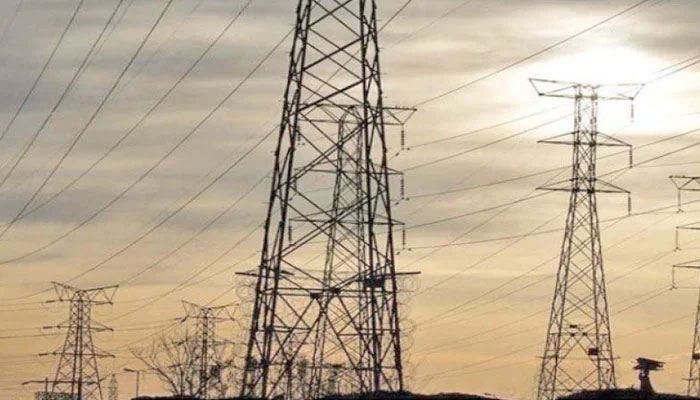The power paradox
Lower electricity prices can stimulate industrial activity, which can catalyse economic growth. There is no dispute regarding this. However, how electricity prices can be reduced is a multi-faceted riddle that cannot be solved with linear thinking.
There is surplus power generation capacity in the country, which is not a bad thing – but that power generation capacity has largely been funded by debt denominated in foreign currency. An increase in interest rates globally, coupled with depreciation of the Pak rupee has led to escalation in the amount of local currency required to service such debt. The same local currency is effectively generated through electricity bills, resulting in a spiral of increase in electricity prices.
As electricity prices increase, the consumption of electricity decreases – which further increases burden on debt payments on electricity consumers, making up a significant proportion of capacity charges. If the scenario is not complex enough, there is significant seasonal variation in consumption of electricity, as consumption peaks during summer, while reverting to almost half of the peak during winter. Such significant variation results in pricing mismatch, as surplus capacity still needs to be paid for to support peak consumption during summer. Availability of such surplus capacity has an economic and financial cost attached to it, which is passed on in the electricity bills.
To make things more complex, there is a mismatch between the composition of costs associated with generation, and the composition of price charged from consumers. Electricity generation costs are heavily skewed towards fixed costs, in terms of debt repayment costs, other operations and maintenance costs, and a fixed component for return on equity, etc. Meanwhile, revenue is collected predominantly on the basis of variable consumption. Such a mismatch is exacerbated during winter when variable consumption reduces, but fixed costs associated with generation capacity remain unchanged. To compensate for the mismatch, electricity price is increased further, which further reduces consumption.
Adding another layer of complexity, almost 40 per cent of the country’s residential consumers of electricity can be deemed as lifeline consumers, or those that consume less than 200 units of electricity in a month. Consumption of lifeline consumers is subsidized explicitly through the budget, and implicitly through cross-subsidy. In a cross-subsidy arrangement, industrial, and commercial users are charged a higher price, to ensure that electricity remains affordable for lifeline consumers.
Linear thinking would entail complete elimination of cross-subsidies, but that would mean significantly increasing the burden of electricity prices on residential consumers, which would have a negative effect on welfare. More importantly, an increase in prices will further reduce their consumption – and push up capacity charges. This will also further incentivize residential consumers to accelerate a move off-the-grid, thereby resulting in even greater destruction of demand of electricity on the grid.
The exodus from the grid has already begun, particularly from the richer households in the country. As more households either move off the grid, or opt for net metering, the capacity charges for the system will inadvertently be picked up by the poorer, and vulnerable households. Should households, and industrial/commercial units generating electricity from solar pay for excess capacity that is available, and which they do utilize, or should the bill of the same be footed by other consumers?
An argument here is that households can be considered as nano-power generators, which can sell electricity in a competitive market of electricity. But a competitive market for electricity cannot be developed till the elephant in the room – foreign currency debt, which accumulates to almost eight billion dollars – is addressed. An essential condition for a competitive market is low barriers to entry and exit, but due to excess capacity, and the accompanying financial cost, the barriers remain high.
If all of this wasn’t enough, various taxes make up almost 30 per cent of a consumer’s electricity bill. Although commercial and industrial users can adjust some of it, households do not have such luck. Effectively, electricity bills, ironically, act as a tool for the state’s fiscal policy. The state giveth a subsidy from one hand, thereby distorting the market, while taking back some of the same through various taxes. Such a manoeuvre distorts pricing signals, while unnecessarily burdening the consumers.
Solving this riddle requires multiple policy decisions to be taken in tandem, as well as sequentially. Reducing the mismatch between fixed generation costs and variable revenue, such that overall electricity bill does not change much on an annual basis, can reduce the mismatch, and subsequent subsidies, without burdening the consumers. Similarly, there exists a case for reducing various taxes that are imposed on electricity bills of residential consumers. Any reduction in this can be partially allocated towards reducing cross-subsidy that is provided by industries, while making them more competitive and increasing utilization of the grid. Similarly, necessary financial relief can also be provided to households, while making their electricity bills more predictable through reallocation of variable and fixed charges.
The elephant in the room – the foreign currency debt which is paid by electricity consumers in lieu of capacity charges – needs to be resolved. This can be done through either socializing the costs through novating the debt from balance sheets of power plants to the sovereign, or the electricity consumer can continue to pay the same, thereby stunting growth in the process.
A restructuring of power sector debt remains critical to unlock electricity consumption. The inability to do this will continue to weigh on growth of consumption of electricity in the country, and inadvertently economic growth. There are no easy solutions here, but there is nothing here that hasn’t been solved in different jurisdictions globally.
The writer is an independent macroeconomist.
-
 Meghan Markle's As Ever Facing Branding Problems?
Meghan Markle's As Ever Facing Branding Problems? -
 Kate Middleton Is More Relaxed In 'Wellington Boots Than Diamond Tiara'
Kate Middleton Is More Relaxed In 'Wellington Boots Than Diamond Tiara' -
 Gaten Matarazzo Addresses Important Fans Query About 'Stranger Things'
Gaten Matarazzo Addresses Important Fans Query About 'Stranger Things' -
 Prince William's Latest Move Reveals Rift Is Strong With Prince Harry
Prince William's Latest Move Reveals Rift Is Strong With Prince Harry -
 Princess Eugenie Becomes Second Royal After Meghan To Feature In Viral Trend
Princess Eugenie Becomes Second Royal After Meghan To Feature In Viral Trend -
 Carol Burnett Sings Praises Of Late Jimmy Stewart: 'He Had THIS'
Carol Burnett Sings Praises Of Late Jimmy Stewart: 'He Had THIS' -
 Kate Middleton Dashes Through Rain At Windsor Castle
Kate Middleton Dashes Through Rain At Windsor Castle -
 Dave Filoni, Who Oversaw Pedro Pascal's 'The Mandalorian' Named President Of 'Star Wars' Studio Lucasfilm
Dave Filoni, Who Oversaw Pedro Pascal's 'The Mandalorian' Named President Of 'Star Wars' Studio Lucasfilm -
 Is Sean Penn Dating A Guy?
Is Sean Penn Dating A Guy? -
 Sebastian Stan's Godmother Gives Him New Title
Sebastian Stan's Godmother Gives Him New Title -
 Alison Arngrim Reflects On 'Little House On The Prairie' Audition For THIS Reason
Alison Arngrim Reflects On 'Little House On The Prairie' Audition For THIS Reason -
 Spencer Pratt Reflects On Rare Bond With Meryl Streep's Daughter
Spencer Pratt Reflects On Rare Bond With Meryl Streep's Daughter -
 'Stranger Things' Star Gaten Matarazzo Recalls Uncomfortable Situation
'Stranger Things' Star Gaten Matarazzo Recalls Uncomfortable Situation -
 Gaten Matarazzo On Unbreakable Bonds Of 'Stranger Things'
Gaten Matarazzo On Unbreakable Bonds Of 'Stranger Things' -
 Beyonce, Jay-Z's Daughter Blue Ivy Carter's Massive Fortune Taking Shape At 14?
Beyonce, Jay-Z's Daughter Blue Ivy Carter's Massive Fortune Taking Shape At 14? -
 Meghan Markle Fulfills Fan Wish As She Joins Viral 2106 Trend
Meghan Markle Fulfills Fan Wish As She Joins Viral 2106 Trend




